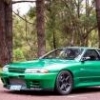Help Me Diagnose A Suspension Vibration
Announcements
-
Similar Content
-
Latest Posts
-
If you own a car, and it has wheels on it, and you know the offset of those wheels, and you have a measuring device, you have everything you need to work out if other wheels will fit.
-
Will this fit? but they are staggered set - RAYS 57DR SEMI GLOSS BLACK 18x8.5 +37 | 18x9.5 +38 5-114.3 STAGGERED SET or If no go could just get a set 4's wheels of 18x8.5 +37 5-114.3 - would i run 8.5's 235s up front n 245's at the back if I do? Thanks.
-
Put a clamp on your return line. I have a feeling it's sucking air, and introducing bubbles to your fuel. With a lot of fuel, less problematic. I'd honestly be redoing all the lines in the tank and clamps on everything. Also, you've given two different answers to the same question: Asked if being followed by the police you could get down to use the whole tank, you said yes you could, so long as you keep off boost. However, you then followed this up that free revving, it would also cause the issues. I'm doubting free revving is enough to make any noticeable boost on what is likely a decent sized turbo. So now I have to ask, can you actually drive it lightly and use all the fuel, or does it break up even free revving? Also, have you put a fuel pressure gauge on it? Can you hear the pump change noise at all when you're having this issue?
-
Thanks guys - I have been overseas for a hectic many weeks , so haven't had time to chase any of these up. Some of the suggestions are for 4.1 ratio, which I already have, and a 3.5 at Lonsdale, which is also too tall. Really looking for 3.9 or even a 3.7 LSD, either with M12 bolts. Will look some more.
-





Recommended Posts
Create an account or sign in to comment
You need to be a member in order to leave a comment
Create an account
Sign up for a new account in our community. It's easy!
Register a new accountSign in
Already have an account? Sign in here.
Sign In Now